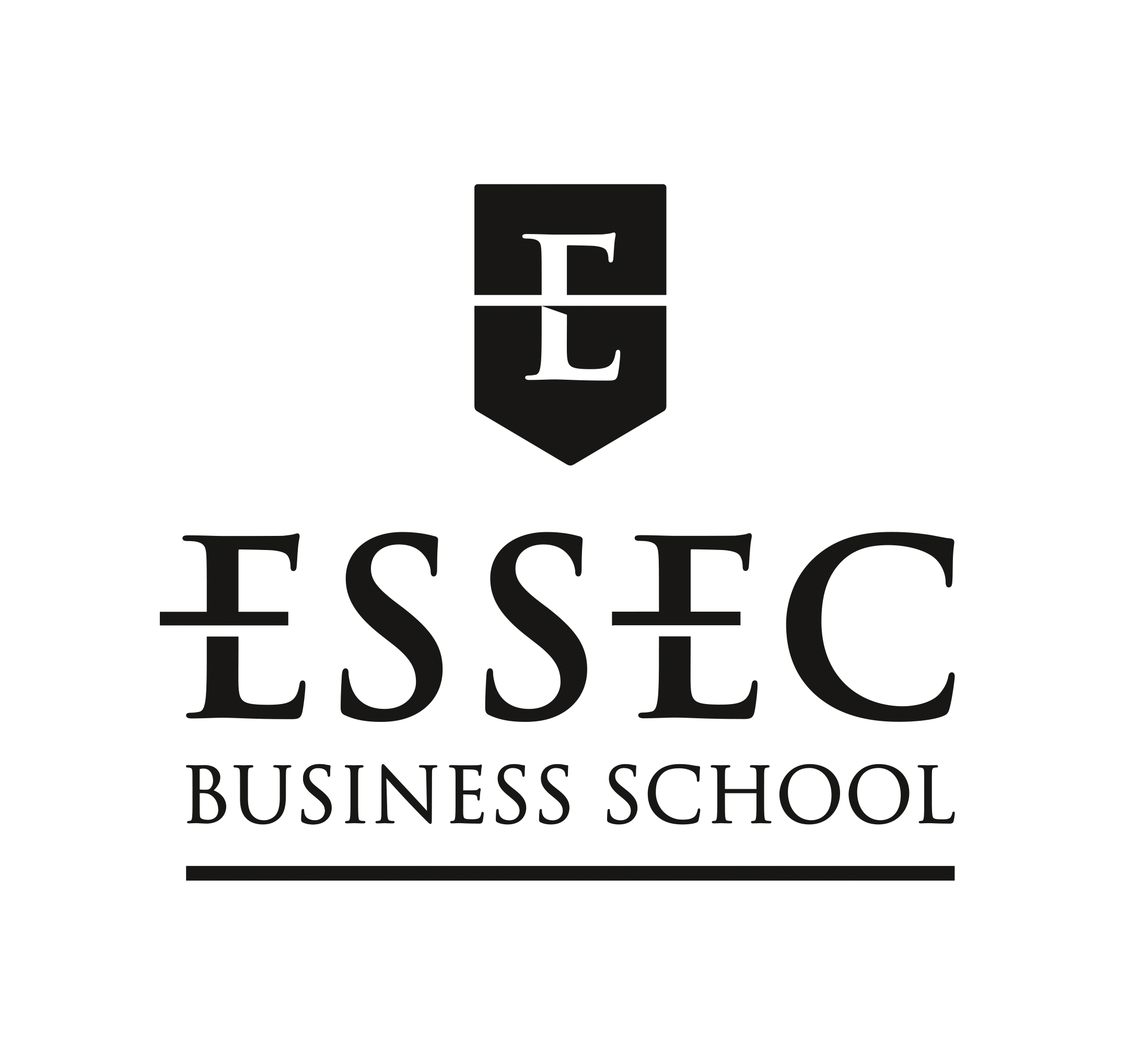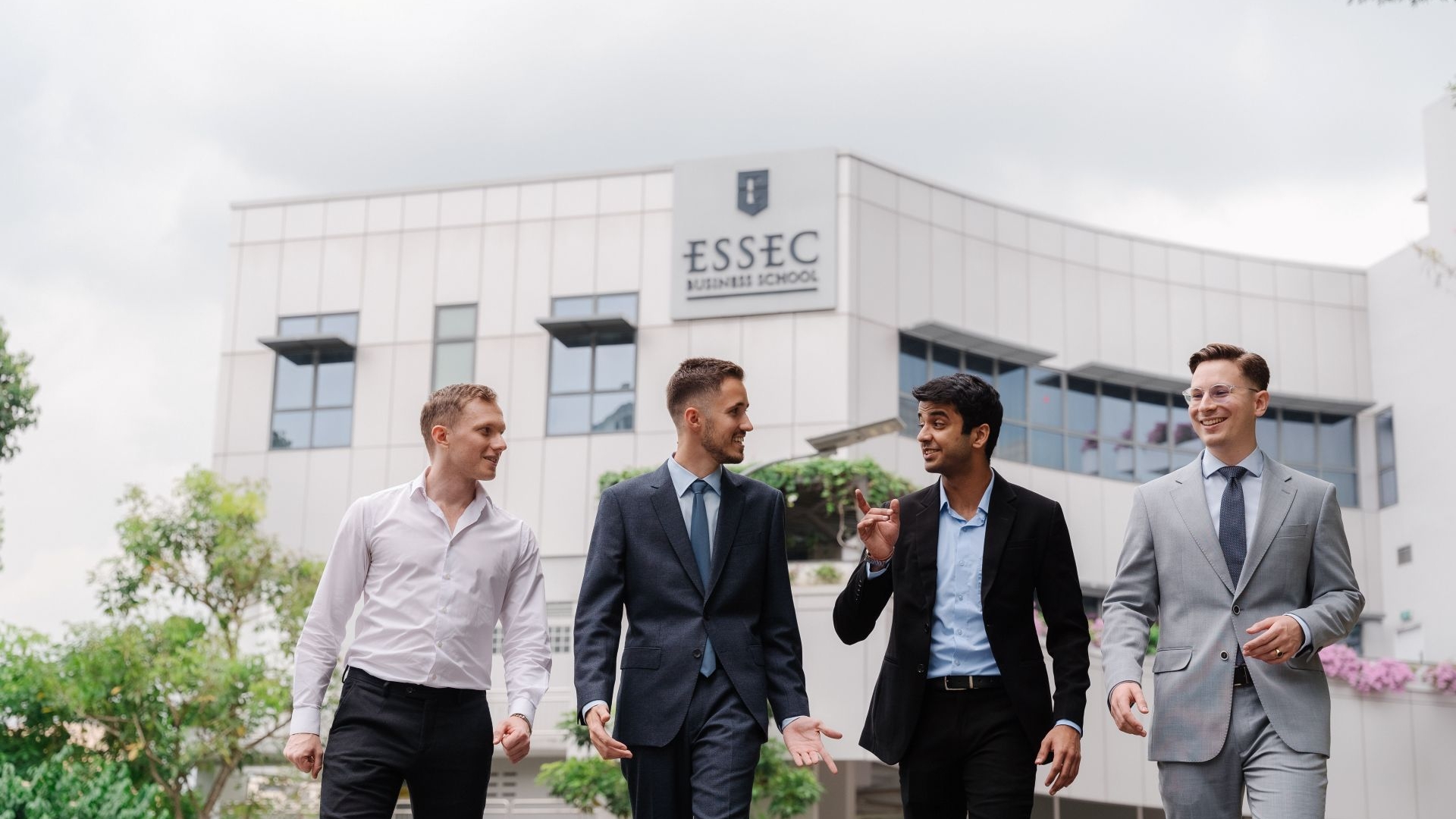What attracts graduates from top universities in India to take a Master’s degree at ESSEC’s Asia-Pacific campus in Singapore?
Following the tried and tested path through the university by Venkata Satya Hemendra Sai Karasala, a graduate of Birla Institute of Technology, and Kamakshi Katyal, a graduate of Delhi University, smoothly from the classroom and into the workplace. But over time, they began to plateau.
Hemendra’s initial excitement about joining the bank faded as he was drawn into a cycle of repetitive tasks. On the other hand, Kamakshi moved from a think tank to a nonprofit, found herself attracted to leadership roles—and realized she lacked the desired expertise.
Seeking more significant intellectual challenge and professional growth, the two pursued their master’s degrees at ESSEC Asia-Pacific.
Leaving the Comfort Zones of India
“I wanted a challenging curriculum and an international business school where I would be exposed to people with different mindsets and approaches,” Kamakshi shares, adding that ESSEC appealed to me because of its academic reputation and French background.
“I’d never been exposed to French culture before, so I knew I’d be out of my comfort zone, and I wanted to thrive in it,” she explains.
After joining the ESSEC Master in Management (MiM) program, she quickly realized that the ESSEC’s diversity and uniqueness go beyond just the nationalities of her classmates—it is woven into the curriculum. True to the flexibility and adaptability that the MiM aims to train, there is no fixed structure, and students can tailor their education to meet their individual goals.
“No two courses have the same students, so you are exposed not just to your classmates but also students from various master’s programs,” she observes, noting that this has helped broaden her network as she pursues her journey in management and finance.
Developing New Frameworks of Thought
For Hemendra, who was enrolled in the Master of Finance (MiF) program, it was an equally big adjustment. The logical, solution-oriented approach that served him well during his engineering studies was better suited for exams and individual assignments—not the collaborative group work that was the focus at business school.
“The biggest difference was that in engineering, every problem has a deterministic solution; in the end, you can always find the right answer. But in business school, the problems are more open-ended; you don’t have a definite solution,” he explains.
“I realized it’s not about the answer, but how you collaborate with people to come up with a solution—it’s about how you present and communicate your idea.”
Building Skills For the Real World
Hemendra adds that learning at a master’s level means there is less emphasis on simply getting through the school system—with an older, more experienced cohort already schooled in the basics, instruction is less about passing exams and more about responding to real-world situations.
A significant advantage for him was that he was taught by professors from industry.
“They really want to prepare you for industry, so they are not afraid to teach you the more complicated things,” he explains, adding that these professors also go beyond theory to demonstrate how they personally would view and solve any problem.
To build on this professional experience, ESSEC also offers professional tracks, called Chairs, that are sponsored and co-designed by industry leaders, Kamakshi says. Doing the Accenture Strategic Business Analytics Chair has allowed her to gain valuable industry exposure, giving her a solid foundation for a more straightforward career path.
Although Kamakshi is just months from graduation, she is clear that the learning journey has only just begun. “Moving forward, I need to continuously be exposed to the latest technology, systems, and emerging trends,” she declares.
Hemendra echoes her sentiments: For him, securing full-time employment at Morgan Stanley is the start of a new growth phase. The future is uncertain, but equipped with their new skills from ESSEC Asia-Pacific, the two are confident they can conquer.
RELATED POSTS
Stepping Out Of Your Comfort Zone: Why It Matters At Business School
How embracing new challenges accelerates personal and professional growth.
From Singapore to the World: Navigating Your Global Career Path
Beyond a degree, ESSEC Asia-Pacific is your launchpad for a truly global career, equipping you with a powerful international network of 71,000 alumni…
How ESSEC Asia-Pacific Builds A Sense Of Community
From orientation to cultural nights — how students feel supported and included.
Making Friends Across Cultures: Lessons From A Diverse Classroom
Stories and tips on navigating intercultural friendships at ESSEC Asia-Pacific.
Your Global Network Starts Now: Why ESSEC Friendships Matter
Beyond the classroom, discover how ESSEC Asia-Pacific cultivates a strong sense of belonging and community for international students, leading to…
How Studying In Asia Changed My Worldview
Reflections from an ESSEC Asia-Pacific international student.








